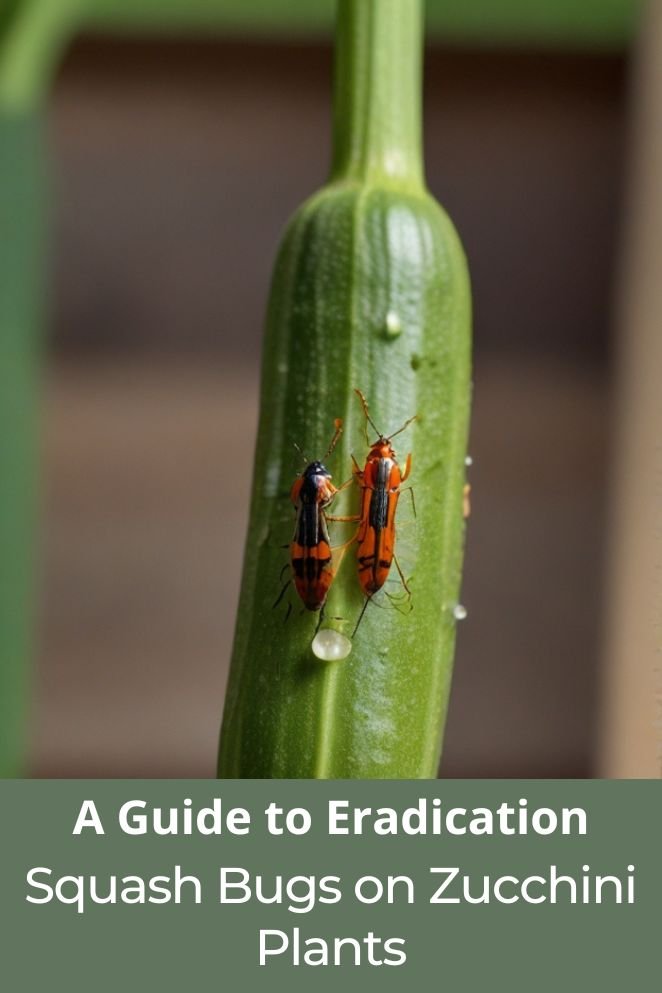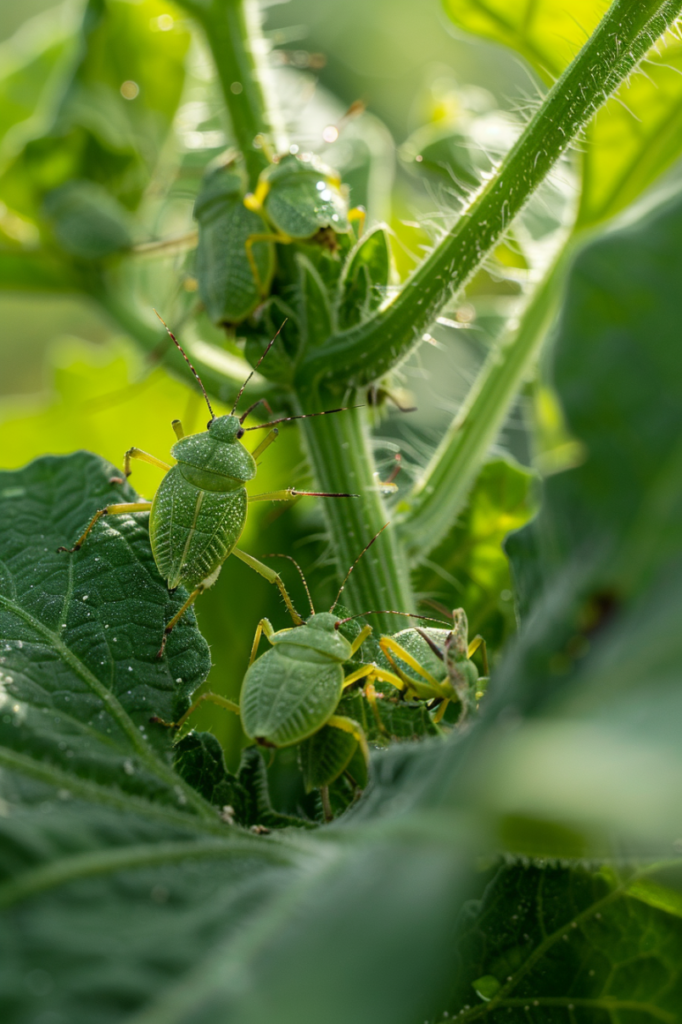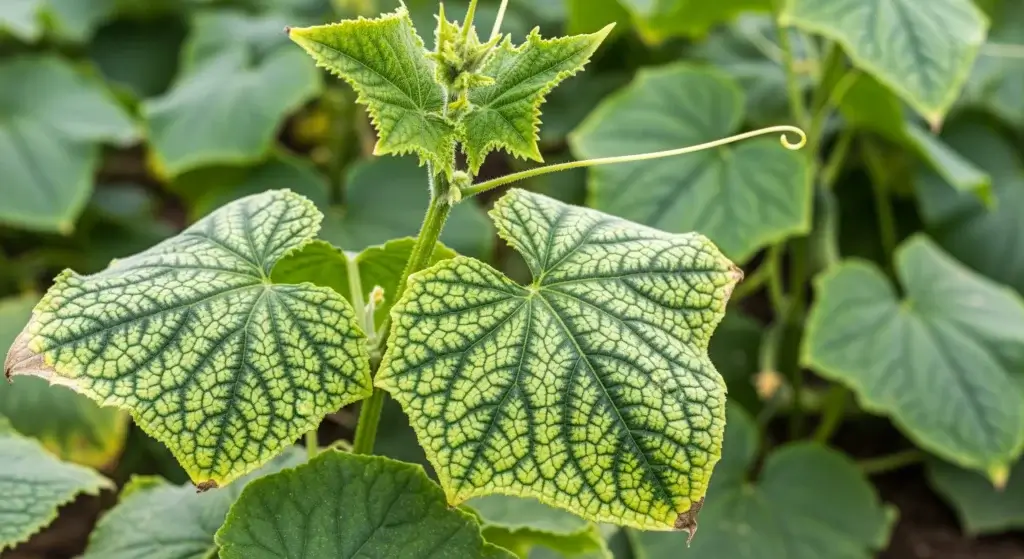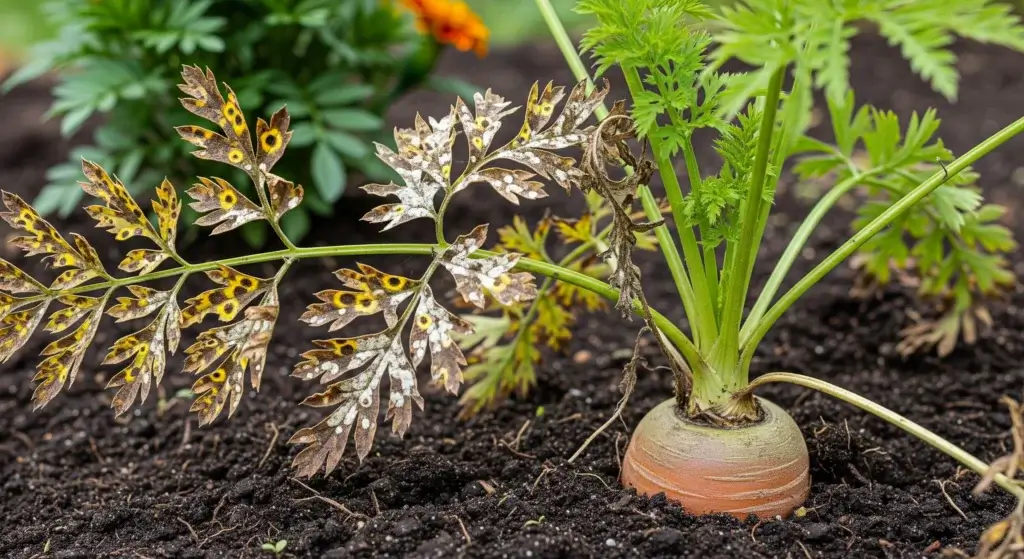
Squash bugs are a common pest that can significantly impact the health and productivity of your zucchini plants.
These flat, brown insects feed on the sap of the plant, causing damage and stunted growth.
In this article, we will explore the physical appearance of squash bugs, signs of an invasion, and both organic and non-organic control methods.
Additionally, we will discuss how to prevent squash bugs from infesting your zucchini plants in the first place.
Physical Appearance of Squash Bugs
Squash bugs, scientifically known as Anasa tristis, are recognizable by their distinct physical features.
Here’s a description of their appearance:
- Shape: Squash bugs typically have a shield-shaped or elongated body.
- Size: Adults can range from about 1/2 to 3/4 inch in length.
- Color: They are usually dark gray or brownish-black in color.
- Texture: Their bodies may have a slightly flattened appearance.
- Wings: They have fully developed wings that lay flat over their backs when at rest.
- Legs: Squash bugs have six legs, which are relatively long and slender compared to their body size.
- Antennae: They have straight antennae that are about half the length of their bodies.
- Nymphs: Young squash bugs, called nymphs, are smaller and have a more translucent appearance, often with bright orange or red markings on their bodies.
Signs of a Squash Bug Invasion
Detecting a squash bug invasion early is crucial for protecting your plants from damage.
Here are some signs to keep an eye out for:
- Adult squash bugs: Keep an eye out for adult squash bugs, which tend to gather in groups on the undersides of leaves, especially near the base of the plant.
- Egg masses: Look under the leaves for clusters of small, bronze-colored eggs. Squash bug eggs are often neatly arranged in rows and can look like small copper-colored coins.
- Wilting or discoloration: Watch for wilting or browning of leaves, which can be a sign of feeding damage from squash bugs.
- Stippling and yellow spots: Squash bugs feed by piercing plant tissue and sucking out sap, which can cause stippling or small yellow spots on leaves.
- Foul odor: Pay attention to any unpleasant odor around your squash plants, as squash bugs emit a distinct smell when disturbed or crushed.
- Squash bug nymphs: Look out for young squash bugs, called nymphs, which are smaller and more translucent than adults.
- Plant decline: Be aware of any sudden decline in the health of your squash plants, as severe infestations can lead to stunted growth, reduced fruit production, and even plant death.

- Read also: Stink Bug Plant Damage and How to Protect Your Garden
- Read also: Ladybugs for Garden Pest Control: Nature’s Tiny Guardians
Organic and Non-Organic Control Methods
Organic Methods
Handpicking and removal
The most effective approach for small-scale infestations is handpicking and removal.
Equip yourself with gloves and carefully pluck squash bugs and their eggs from the affected plants.
This method is particularly useful for early detection and requires consistent monitoring to prevent further spread.
Row covers
Row covers serve as a physical barrier to prevent adult squash bugs from accessing your plants.
These covers are lightweight and breathable, allowing sunlight and water to penetrate while shielding your crops from pests.
They are best utilized during the growing season to safeguard your plants from infestation.
Diatomaceous earth
Diatomaceous earth, a natural powder derived from fossilized aquatic organisms, acts as a non-toxic solution to combat squash bugs.
Sprinkle it on the soil surrounding your plants to dehydrate and eliminate crawling squash bugs.
This method is safe for organic gardening practices and can effectively reduce pest populations.
Insecticidal soap sprays
As a last resort for organic gardeners, insecticidal soap sprays can be employed to tackle stubborn squash bug infestations.
These sprays target squash bugs while minimizing harm to beneficial insects.
However, exercise caution and adhere strictly to label instructions to avoid unintended consequences.
Non-Organic Methods
Insecticidal sprays containing compounds such as pyrethrin or permethrin offer a solution for combating heavy squash bug infestations.
These sprays effectively target squash bugs, helping to reduce their populations.
However, it’s important to note that they can also inadvertently harm beneficial insects in your garden.
Therefore, it’s crucial to exercise caution and follow label instructions meticulously when using these sprays.
Additionally, prioritize safety precautions to minimize risks to yourself, your plants, and the surrounding environment.

How to Prevent Squash Bugs
Preventing squash bugs on zucchini plants requires a combination of proactive measures.
Here are some effective strategies:
Rotate crops
Rotate your crops annually to prevent the buildup of pests and diseases in the soil.
Avoid planting zucchini or other squash family plants in the same location year after year.
Rotating crops helps disrupt the lifecycle of pests like squash bugs, reducing their overall impact on your plants.
Monitor regularly
Regularly inspect your zucchini plants for signs of squash bugs, including adult insects, egg masses, and nymphs.
Early detection is key to preventing infestations from becoming severe.
By monitoring your plants closely, you can intervene promptly at the first sign of pest activity.
Cultivate a clean garden:
Keep your garden free of debris, such as fallen leaves and plant debris, where squash bugs like to hide.
Maintain tidy garden beds by removing weeds and clearing away any potential hiding spots for pests.
A clean garden environment makes it less hospitable for squash bugs to thrive.
Prune zucchini plants
Regularly prune your zucchini plants to improve air circulation and reduce hiding places for squash bugs.
Remove any infested or damaged leaves promptly to prevent the spread of pests and diseases throughout the plant.
Encourage natural predators
Attract beneficial insects, such as ladybugs, lacewings, and parasitic wasps, to your garden by planting a diverse range of flowers and herbs.
These natural predators feed on squash bugs and help keep their populations in check, providing a sustainable and eco-friendly form of pest control.
Apply organic pest controls
As a last resort, consider using organic insecticides like neem oil or insecticidal soap if squash bug infestations become severe.
Follow the manufacturer’s instructions carefully and apply the product early in the morning or late in the evening when bees are less active to minimize harm to beneficial insects.

- Read also: Defending Your Curds: Organic Pest Control For Cauliflower
- Read also: Stress-Free Gardening: Top Tips to Protect Vegetables From Pests
Conclusion
Squash bugs are a significant pest for many gardeners, particularly those growing zucchini, acorn squash, and other types of squash.
By understanding the physical appearance of squash bugs, signs of an invasion, and both organic and non-organic control methods, you can effectively manage squash bug infestations in your garden.
Additionally, by implementing prevention methods such as crop rotation, fall cleanup, and companion planting, you can reduce the likelihood of squash bugs infesting your zucchini plants in the first place.



